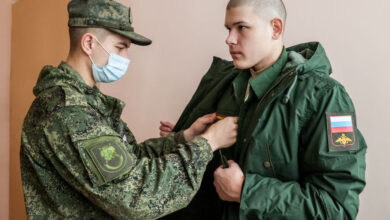Breaking Down the New 2025 Canadian PR Pathways: What Immigrants Need to Know

Thinking of making Canada your home in 2025? With new pathways to permanent residency (PR), Canada’s welcoming immigration system just got even better. Whether you’re drawn to Canada for its diverse culture, high quality of life, or the thriving job market, 2025 offers a unique opportunity to turn your Canadian dream into reality. The Canadian immigration system continues to evolve, ensuring that people from all walks of life—whether skilled workers, caregivers, or entrepreneurs—have a clear path to permanent residency. In this blog post, we’ll dive deep into these new PR pathways, explain who they’re for, and provide practical tips to help you navigate the application process. If you’re ready to explore your options, read on to find out how you can take advantage of these exciting opportunities.
Understanding the New 2025 Canadian PR Pathways
Canada has long been known for its welcoming spirit, diverse culture, and thriving economy. As the country evolves, so does its immigration system. The 2025 permanent residency (PR) pathways are designed to meet Canada’s labor market needs while addressing regional workforce shortages. Whether you’re a skilled worker, caregiver, or entrepreneur, these new pathways could be the key to your Canadian future.
There are four major new immigration pathways in 2025:
- Enhanced Caregiver Pilot Programs
- Rural Community Immigration Pilot
- Francophone Community Immigration Pilot
- Manitoba’s West Central Immigration Initiative Pilot
- Enhanced Caregiver Pilot Programs
Caregivers play a crucial role in Canada’s healthcare system, especially with an aging population. The Enhanced Caregiver Pilot Programs offer a direct path to permanent residency upon arrival, replacing the previous process that required caregivers to apply after working in Canada for a certain period.
Who is this for?
This pathway is ideal for home childcare workers and home support workers, as well as others providing essential care services to individuals recovering from illness or injury.
Eligibility Requirements:
- Language Proficiency: Canadian Language Benchmark (CLB) score of at least 4.
- Education: A high school diploma that meets Canadian standards.
- Work Experience: Recent and relevant caregiving experience.
- Job Offer: A full-time job offer from a qualifying employer.
Benefits:
- Permanent residency upon arrival.
- Simplified immigration process to meet the growing demand for caregivers.
- Rural Community Immigration Pilot
Many rural communities in Canada are facing labor shortages. The Rural Community Immigration Pilot is designed to attract skilled workers to these regions, providing a direct route to permanent residency.
Who is this for?
This pathway targets skilled professionals willing to work in rural areas. If you’re a healthcare worker, teacher, engineer, or work in another high-demand field, this program may be for you.
Eligibility Requirements:
- Skills Matching Local Needs: Qualifications must meet local labor demands.
- Willingness to Relocate: Applicants must commit to living and working in rural areas for an extended period.
Benefits:
- Permanent residency for successful applicants.
- The opportunity to live in scenic communities with a lower cost of living and a close-knit atmosphere.
- Francophone Community Immigration Pilot
Canada’s Francophone communities outside of Quebec are growing, and the Francophone Community Immigration Pilot aims to strengthen these communities by attracting French-speaking professionals.
Who is this for?
This program is for French-speaking professionals who wish to live and work outside Quebec, contributing to the cultural and economic growth of Francophone regions in Canada.
Eligibility Requirements:
- French Proficiency: Applicants must demonstrate fluency in French.
- Willingness to Live and Work Outside Quebec: Open to relocating to French-speaking communities in other provinces.
Benefits:
- Strengthen Canada’s Francophone communities.
- Direct pathway to permanent residency for eligible applicants.
- Manitoba’s West Central Immigration Initiative Pilot
Focused on attracting skilled workers to Manitoba’s West Central region, this initiative addresses the area’s high demand for skilled professionals in sectors like healthcare, technology, and trades.
Who is this for?
Skilled workers in fields like healthcare, technology, and trades who are willing to live and work in Manitoba’s West Central region.
Eligibility Requirements:
- Skills Match: Must meet labor needs in the region.
- Commitment to Relocate: Applicants must commit to living and working in West Central Manitoba.
Benefits:
- Permanent residency for successful applicants.
- Enjoy the quality of life Manitoba offers with a lower cost of living and a supportive community.
With these new PR pathways, Canada is opening more doors for skilled workers, caregivers, and French-speaking professionals to build a future in thriving communities.
Comparing the New Pathways to Existing Options
While the new 2025 PR pathways offer exciting opportunities, it’s important to compare them with existing options like Express Entry and Provincial Nominee Programs (PNP).
- Express Entry is a fast-track system for skilled workers, with sub-programs like the Federal Skilled Worker Program and Canadian Experience Class. It’s one of the most efficient pathways but remains competitive.
- Provincial Nominee Programs (PNP) allow provinces to nominate individuals based on local labor needs. The new pathways complement the PNP by targeting specific sectors and regions with high demand.
- Family Class Sponsorship allows Canadian citizens and permanent residents to sponsor close family members for immigration.
- Start-Up Visa offers PR to entrepreneurs who want to start businesses that create jobs in Canada.
The 2025 PR pathways enhance Canada’s immigration landscape by adding more targeted options to existing programs like Express Entry and PNP.
Challenges and Considerations for Applicants
While these new pathways offer great opportunities, there are a few challenges to be aware of:
- Reduced Quotas: Canada’s immigration targets for 2025 may be lower, potentially increasing competition for these pathways.
- Eligibility Requirements: Each program has specific criteria that applicants must meet, such as language proficiency, work experience, or a job offer.
Understanding the challenges can help applicants better prepare and improve their chances of success.
Tips for a Successful Application
To improve your chances of success, follow these steps:
- Stay Informed: Regularly check the IRCC website for updates on application deadlines and changes to eligibility requirements.
- Prepare Your Documents: Ensure that necessary documents, such as language test results, work experience proof, and educational credentials, are ready before applying.
- Consult Experts: Consider working with an immigration consultant like MDSVISA Immigration Services to navigate the complexities of the application process.
A well-prepared and informed approach can significantly increase your chances of a successful PR application.
Conclusion
Canada’s 2025 PR pathways offer exciting new opportunities for skilled workers, caregivers, and French-speaking professionals, making immigration more accessible and targeted. While these programs create exciting opportunities, navigating the eligibility criteria and competition requires careful preparation. By comparing these pathways with existing options like Express Entry and PNP, understanding potential challenges, and following best practices for a strong application, you can maximize your chances of success. If Canada is your dream destination, now is the time to take informed steps toward making it a reality.



